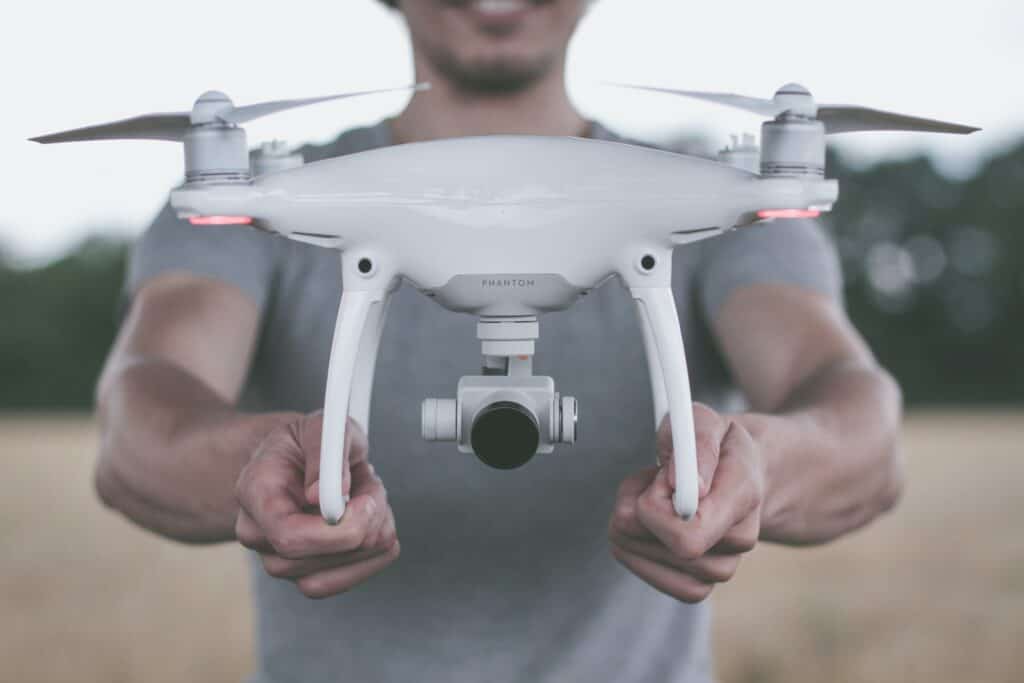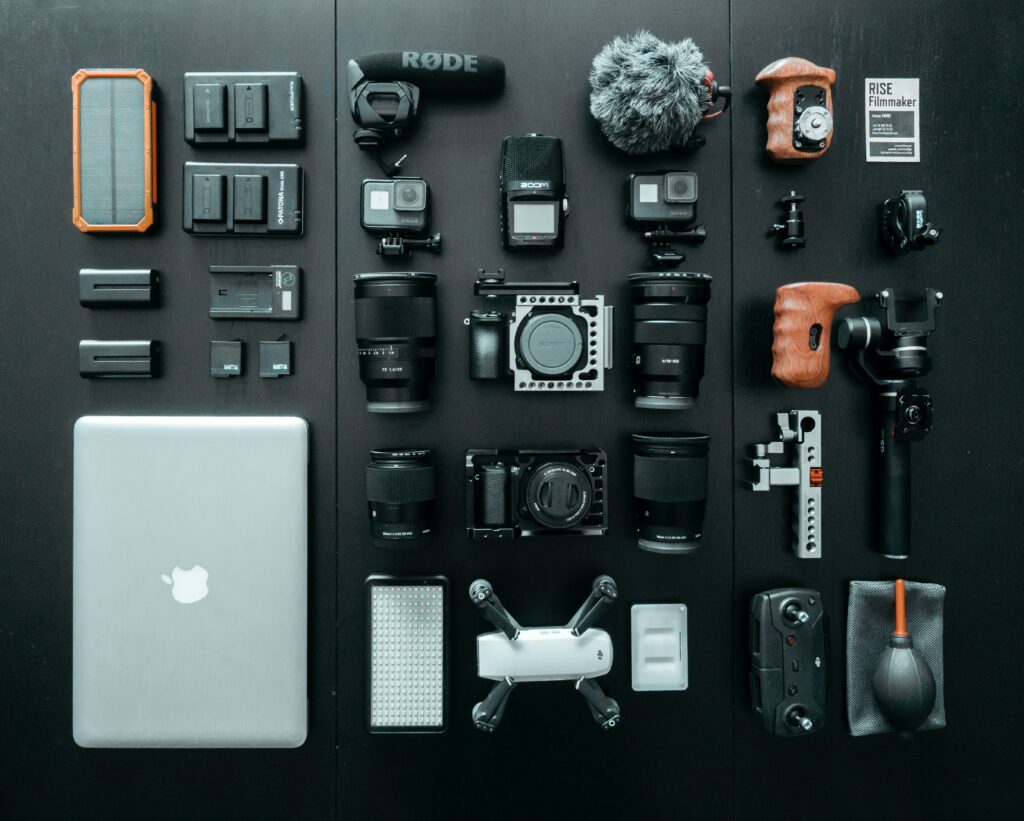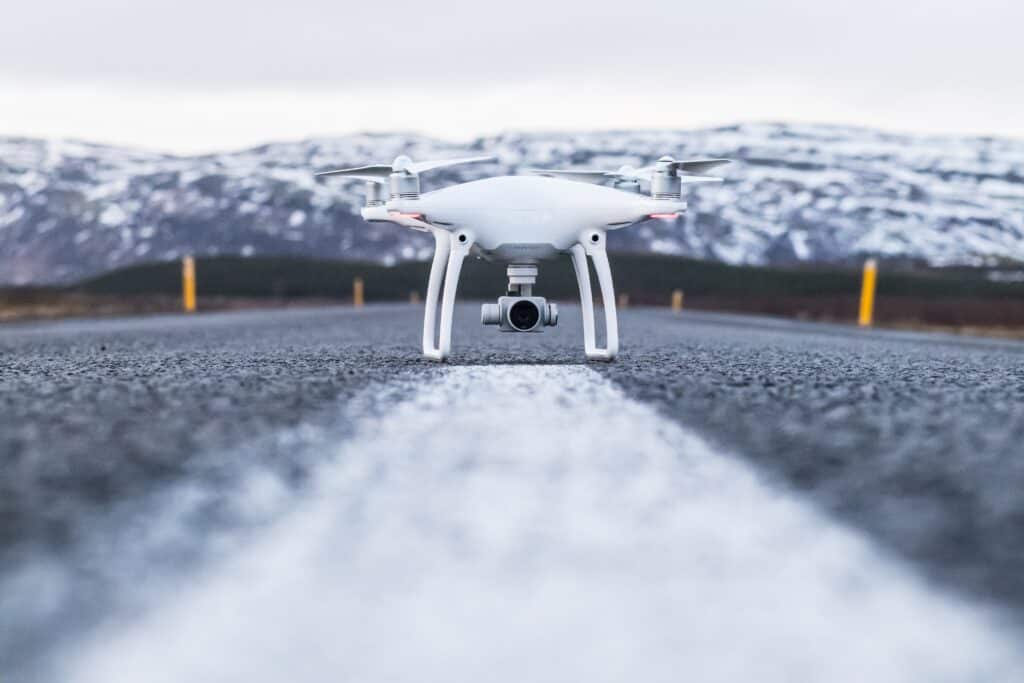Let’s face it.
No one loves repeating a series of steps for safety checks.
They can be annoying, time-consuming, and tedious and serve to keep you away from drone flying, which is what you want to do.
But take it from us: a routine process of diligently going through your Checklist is the difference between a safe flight and a drone flying away.
In our experience, forgetting to check your settings after a firmware update or missing the power check is a sure way to increase your chance of crashing that drone.
And this applies equally to the first-time drone flyer as it does to the professional who has flown hundreds of missions.
We know.
We have been there ourselves.
TLDR
Drone preflight and post-flight checklists are crucial for ensuring drone safety and compliance with local legislation.
This post intends to encourage and persuade novice and experienced drone pilots to embrace this simple and effective practice to ensure a safe flight experience.
As a drone pilot, you ensure safe and compliant flights while adhering to local rules. Therefore, prioritizing safety is critical in drones.
Including preflight and post-flight checklists in your routine is a tried-and-true way.
On this page, we focus on the drone preflight Checklist.
It is critical to build good habits that maximize your drone safety.
You will also find our post-flight checklist discussion helpful, dramatically enhancing your drone life.
You can find our discussion of the drone post-flight checklist here: Drone post-flight Checklist.
Please note that while these recommendations focus primarily on the Federal Aviation Administration (FAA) requirements, they equally apply to the UK Civil Aviation Authority, the EASA, which governs European drone flights or other regulators in other jurisdictions worldwide.
The primary difference is the drone regulation scope under which you will operate.
In other words, the drone checklist is a universal concept worthy of every drone flyer’s attention.
The Art and Science of Drone Preflight and Post-flight Checklists
Before each flight, every commercial drone operation must use a checklist template to confirm that everything is in working order.
The safe operation and upkeep of your drone systems are crucial.
You can’t afford to ignore diligent safety checks if you don’t want to jeopardize your license, equipment, or the entire firm.
If you do not follow the proper procedures to eliminate risk and uncertainty, you’ll waste time and money trying to determine what went wrong.
Furthermore, pilots must comply with safety standards and use the proper technique for safe, intelligent drone operation.
These checklists will guide you through a comprehensive list of typical problems and preventative steps to ensure you do everything possible to limit risk and streamline your flight procedure.
Ultimately, this approach can mean the difference between a successful operation and a disastrous mission failure.

Pre-flight Checklist: Your Key to Safer Drone Flight Readiness
A preflight checklist is a roadmap to ensure your drone is in good condition and ready for a safe flight.
By following this crucial step, you can identify and rectify any potential issues before takeoff, preventing incidents and ensuring the safety of everyone involved.
Mastering the Preflight Inspection: A Comprehensive Approach
According to American law, drones are considered aircraft subject to Part 107 of the Federal Aviation Administration’s (FAA) Small UAV Rule.
Drone regulations require pilots to conduct preflight drone checks to ensure the ideal equipment and flying conditions.
A comprehensive checklist includes detailed guides for drone pilots in the five following areas:
- Understanding the drone regulations governing the operation.
- Completing flight planning and getting the necessary documentation before drone operation.
- Assessing whether the flying conditions and weather support safe operations.
- Ensuring that the drone and all components are fit for flight.
- Inspecting the launch and landing sites.
Assuming the pilot clears all those items on the preflight Checklist, you are ready for a safer drone flight. Let’s explore each of these pre-flight check steps in more detail.
Understanding the drone regulations governing the operation.
Ensure compliance with FAA drone regulations.
Section 44809 of the FAA’s regulations allows for specific recreational drone use.
However, such flights are subject to strict limits and constraints, and you can only conduct these flights for recreational purposes.
In addition, all other flights of drones weighing less than 55 pounds are subject to the FAA Part 107 regulation governing UAV operations in the United States.
You will typically select a specific drone regulation scope under which your drone will operate: FAA 107 or Section 44809.
Ensure you are FAA compliant and that your flying scope meets the current requirements.
Suppose you are unsure about the scope of your operations. In that case, contacting an FAA official is best to ensure everything is in order.
Ensure you completely comply with all FAA, state, and local regulations.
Ensure compliance with state drone regulations.
While most states target drone laws to control non-commercial UAV usage, some commercial operations will still fall under their purview.
Therefore, you should be well-versed in any relevant state-level regulation.
Compliance with UAVs can be puzzling – and sometimes conflicting.
At least seven states have passed legislation prohibiting local governments from regulating unmanned aerial vehicles (UAVs) inside their borders.
Do your research to avoid non-compliance.
Ensure compliance with local drone regulations.
The final step toward full compliance is familiarizing yourself with the jurisdictions governing your aviation operations.
Around 133 municipalities have implemented special UAV-related laws, and not all fully comply with the regulations covered by the FAA’s Small UAS Rule, Part 107.
Check with a local representative and assess the entire range of drone operations.
Remember to establish whether or not the regulation covers only recreational or commercial UAV operations.
Check that the drone license (if needed) is valid and available.
A commercial drone license is not required if you fly as a government employee (public safety – police, fire, etc.).
In addition, you will not need a drone license if you conduct your operation under the scope of the Section 44809 exception for recreational flyers.
To operate unmanned aerial systems outside Section 44809 exception or commercially in the United States, you must have a valid and current commercial drone license, also known as a Part 107 Remote Pilot Certificate.
Obtaining a Remote Pilot Certificate requires passing an aeronautical knowledge test and a TSA (Transportation Safety Administration) screening.
Once the drone pilot or operator receives their license, they must have it available for inspection by government officials during any drone operation.
Ensure you have a copy if a drone license is required.
Check that the drone registration is valid.
The FAA requires all drones weighing more than 0.55 pounds to be registered.
You can register a drone under Section 44809 for recreational use, but you cannot then use that drone for commercial drone operations.
A drone can be registered under Part 107, allowing for recreational or commercial drone operations.
Check to ensure that your registration is appropriate for the nature of your drone operation and that it is valid.
Check to ensure that you marked your registration number on your drone.
Completing flight planning and getting the necessary documentation before drone operation
Create a flight log and record the basic flight planning details.
You should maintain basic information regarding the drone and who piloted it on file for the benefit of compliance and general responsibility.
You should, at the very least, include the following:
- The pilot’s first and last names
- FAA identification number
- Flight date and location of the flight
- Name and model number of the drone
- Drone identification number (serial)
- Drone mass (kg)
- Any specific payload
- Additional notes
Record your purpose for the drone flight.
Accurate records of flight objectives are essential for compliance.
A procedure incorporating this information might lead to usable datasets later on. Explain the entire scope of flight operations.
Please save a copy of your flight plan consistently (we use project, location, and date for our naming conventions).
Determine whether you need any special permissions for your specific drone flight.
You may not need to seek special permission before a drone operation.
However, if you do, you’ll need to provide the relevant documents and ensure they are valid.
Researching and understanding the regulations and requirements for drone operations in your location is essential to avoid legal issues.
Additionally, obtaining special permission may be necessary for certain drone operations, such as flying over crowds or in restricted airspace.
Does your drone flight require a waiver for operational permission?
The FAA requires you to apply for and receive a waiver to conduct the following types of operations:
- Fly a small unmanned aerial system (SUAS) from a moving aircraft or vehicle in populated areas.
- Fly a SUAS at night without anti-collision lighting.
- Fly a small UAV during periods of civil twilight without anti-collision lighting.
- Fly a drone beyond your ability to determine the SUAS’s altitude, attitude, position, and movement with unaided vision.
- Use a visual observer without following all the visual observer requirements.
- Fly multiple SUAS with only one remote pilot.
- Fly over people with a small UAS that does not meet the conditions of operational categories 1, 2, 3, or 4
- Fly a small UAS:
- Over 100 miles per hour ground speed
- Over 400 feet above ground level (AGL)
- With less than three statute miles visibility
- Within 500 feet vertically or 2000 feet horizontally from clouds
- Fly over moving vehicles with a small UAS which does not meet the conditions of operational categories 1, 2, 3, or 4
If your drone operation requires a waiver, you must have applied for and received approval before the drone flight.
Ensure that you have a copy of your properly dated waiver, if appropriate, with you.
Does flight require access to restricted airspace?
Use the FAA-approved B4UFLY app or other tools that identify no-fly and no-drone zones and controlled areas to ensure that the site you will be flying is cleared for drone use.
If your drone flight enters controlled airspace, you must use the FAA LAANC Authorization feature to get prior authorization for your flight.
In addition, check the FAA Notam system to ensure you are not flying into temporarily restricted areas.
Check that you have a copy of any correctly dated LAANC authorization before your flight and that the document is with the pilot or drone operator during the drone operation.
Assessing whether the flying conditions and weather support safe operations.
Weather can be unpredictable and extremely dangerous for drone operations; therefore, adding proper checks to your workflow is critical.
Prevailing wind speed can make a big difference in how your drone flies. Therefore, awareness of local wind speeds and their impact on your flight, especially at altitude, is critical.
Taking the time to analyze whether or not vision is consistent over the intended range of operation is a relatively easy but crucial check.
Even if you do not expect clouds, fog, and other environmental conditions, they might emerge quickly and drastically interrupt operations.
Precipitation can cause havoc on drone systems, particularly those with unseen structural damage and exposed electronics.
Evaluating precipitation levels allows you to make more informed predictions about the most likely conditions for that day.
As a result, you are better prepared to mitigate faults and failures in your operations.
Use the UAV Forecast app or a local weather service provider for best-practice weather inspections. You can also check the METAR / TAF readings if you fly near an airport.
It is essential to stay updated on the weather conditions, as they can significantly affect the performance and safety of your UAV.
In addition, it is always better to err on the side of caution and postpone a flight if there are any concerns about the weather.

Ensuring that the drone and all components are fit for flight.
Review the Checklist from your most recently completed drone flight with this drone.
Look for notes regarding items that were problematic or that you identified as requiring repair or maintenance.
Check that all maintenance tasks and concerns are complete.
Check that your drone’s batteries are adequately charged.
You must ensure your drone system’s batteries have enough charge for your desired payload as you prepare it for flight.
You will minimize chances for a power-critical mission failure by ensuring each drone battery has a reasonable minimum charge as your safety margin.
We use a minimum 75% charge for our operations.
Spares should be kept on hand for each unit to minimize downtime due to charging.
Before launch, make sure that you firmly attach all battery packs into place.
Check that your drone controller batteries are adequately charged.
Whether it’s a traditional ‘twin-stick’ style handheld transmitter or a portable ground control station, ensure you fully charge all battery-powered controller components.
You can no longer control your drone if your remote controller loses power.

Inspect all your drone components for visible damage.
Before you begin any close-up pre-flight inspection of your drone unit, especially one involving propellers, make sure to turn off the system completely.
Without routine inspection, structural damage might go undetected, which can take the form of tiny cracks or dings and appear anywhere on the drone unit.
These can seriously jeopardize your machine’s safety and proper operation over time and when compounded.
Check off each component and carefully examine each for visual damage. Note if anything needs to be replaced or repaired once the entire unit has been inspected.
If your drone needs repair, identify precisely the item that requires servicing.
Then, assess the damage you found to determine whether the flight can proceed safely. When in doubt, err on the cautious side.
Suppose you have identified specific items requiring repair. In that case, a copy of your Checklist will serve as a valuable reminder for whoever will do the necessary maintenance.
Ensure your drone is clear of debris or obstructions.
Parts of your system may malfunction or behave strangely due to dirt and debris.
Following structural damage inspections, specific areas should be checked and carefully cleaned.
For example, the camera lenses and covers should be free of scratches and foreign objects, the propellers should be able to rotate freely, and the status LEDs should be easily visible.
Debris may also be entrapped in confined areas like the motor chamber.
Make sure that each component is unblocked and free of debris. Your drone should still be unpowered at this checkpoint.
Check that all additional components are securely attached to your drone.
With components cleared of obstruction and checked for structural damage, the next step is to fasten each part securely to the unit and double check the storage card is inserted correctly.
Ensure your camera, gimbal, storage card, and additional payload are securely attached to the drone. Also, check each propeller is attached correctly.
Check that your drone’s firmware is up-to-date.
Before calibrating, check firmware updates to minimize any unexpected behavior arising from the component or system update.
Depending on your drone, you can carry out drone firmware updates in one of two ways: wirelessly using an application on a mobile device or physically connecting the drone to the computer using a USB cable or equivalent cable.
Suppose you require a firmware update for your drone or the controller. In that case, you should make the necessary updates and recheck all your settings and the entire system to ensure everything works.
Then, you can proceed after verifying your firmware is up-to-date or updating the firmware on the drone and controller units and rechecking all settings/operating parameters.
Reposition your drone antennas to boost the signal strength if possible.
Take your time to ensure the antennas are in the best possible positions for signal reception before launch.
The importance of signal strength for mission success cannot be understated, and antennas are frequently knocked or moved during transit, previous operations, or routine maintenance.
Therefore, you can confidently calibrate the instruments once you’ve moved the antennas and checked the signal strength.
Check your drone system’s instrument calibration.
Instruments should not need to be recalibrated unless specifically observed operating incorrectly.
This limited recalibration lessens the possibility of human error and inaccurate recalibration.
The GPS and compass instruments are essential to the drone unit’s sophisticated navigation system.
Most of the drone’s navigational features rely on these sensors to function correctly, so it’s crucial to use best practices for instrument recalibration.
Determine whether or not to recalibrate the following components’ readings by testing them:
Calibrate your drone compass.
Interference can cause issues with your compass, particularly when changing locations.
However, it is frequently as simple as accessing an in-app command and waiting for the program to finish its work to calibrate your compass.
For the precise procedure, be sure to consult the manual that is specific to your model.
Regardless of the model, it would help if you did a few things before calibrating.
The steps listed below will ensure that you minimize local interference and improve your chances of accurately calibrating.
- Take off all jewelry made of metal (rings, watches)
- Make sure you charge the batteries to at least 75%.
- Place the drone on a solid, level surface.
- Follow the drone manual to calibrate the drone.
Calibrate the Global Positioning System (GPS) on your drone.
You must reset the component if the Global Positioning System (GPS) coordinates are not displaying correctly.
Ensure you connect to a network before beginning because this step requires an active internet connection, whether wired or wireless.
In addition, you will need to establish a secure connection to the signal to reset your geo-location coordinates because GPS relies on external satellite systems to relay information.
This signal reset is typically done within the drone’s monitoring program or application.
As always, make sure to read the manual. After resetting the coordinates, double-check their accuracy by comparing them to other GPS devices or online maps (you can use Apple or Google).
Calibrate the Drone’s Inertial Measurement Unit (IMU).
The Inertial Measurement Unit (IMU) on your drone is a system that determines angular velocity and linear acceleration by combining accelerometers, gyroscopes, and, occasionally, magnetometers.
Despite the complexity of these instruments, calibrating your IMU is easy because all of the work is done by software running on your drone or control station modules.
Ensure your batteries are charged enough for the entire calibration procedure before you begin.
For best results, calibrate your IMU following the process outlined in your manual when the drone is on stable ground, and the battery is charged at least 75%.
Calibrate your drone’s Return to Home (RTH) safety setting.
The RTH failsafe should be appropriately configured and tested before a full-scale operation.
The process will vary depending on your system.
Still, there are some factors you should always keep in mind, like making sure the home coordinates are set to be higher than the highest potential obstacle nearby.
Also, it’s a good idea to compare your RTH coordinates to GPS references from multiple satellites for increased reliability.
Set the maximum altitude for this drone flight.
Beyond RTH configuration, it’s crucial to set the general maximum altitude to ensure you stay within compliance limits and your controller’s signal range.
Specifically, you should check that your maximum flight altitude meets the following tests:
- The maximum flight altitude is within the ground controller’s visual range.
- The maximum flight altitude is below the legal maximum altitude for a flight in this location.
- Inspect the launch and landing sites to ensure they are clear of obstructions and debris.

Position the drone for a safe launch.
Now that you have examined nearly everything, examining the launch area and identifying the ideal launch site is critical.
Check for potential hazards, such as power lines or trees, that could interfere with the drone’s flight path.
Additionally, clearing the landing site of any obstacles is essential to ensure a safe and successful landing.
Specifically, you should ensure that the drone is on stable, level ground and that there is no loose debris nearby that can be affected by the wind force generated by the drone.
In addition, ensure that the immediate area around the drone is clear and there are no overhead obstructions.
Finally, if the landing area is not the same as the takeoff location, you should also do the same checks on the landing area.
Check the UAV status to ensure the LEDs are working, and it is clear to fly.
Last, watch the status LEDs for any indications of system errors or warnings.
Watch out for emergency or problem signals from the LEDs, indicating that everything operates normally.
For details on LED status signs and what they mean, consult the model-specific documentation for your unit.
Conduct your drone flight safely!
Power up and Fly
Once you have cleanly completed your drone preflight Checklist and there are no open items, you are ready for your drone flight. Power up and fly safely.
Post-flight review – the Key to Longer Drone Life
A post-flight checklist is a wrap-up guide for ensuring your drone is in good condition and ready for the next flight.
By following this additional step, you can identify and rectify any potential issues during your flight, identify any needed maintenance, and prepare your drone for safe transportation and storage in a way that makes it more readily useful for the next flight.
Post-flight Checklist: Safeguarding Your Drone for Future Flights
Post-flight checklists are just as vital as their preflight counterparts.
While a preflight inspection determines the drone’s readiness, a post-flight review ensures that everything is in working order, uncovering any issues that may have arisen during the flight and preparing the drone for its next mission.
They are so vital that we created a printable checklist that includes both.
We use these checklists religiously for every one of our drone flights.
We recommend that you understand and use a post-flight checklist after every flight.
Read more here: Drone Post-flight Checklist
Best Practices for Utilizing Drone Safety Checklists
Consistency and Compliance: The Cornerstones of Drone Safety
To maximize the effectiveness of your drone preflight and post-flight checklists, it’s crucial to adhere to the following best practices:
- Consistently use the same checklists for each flight. This habit will help ensure you do not miss steps and follow all necessary safety procedures. Additionally, ensure that all operators are trained on the checklists and understand their importance in maintaining compliance with regulations and ensuring safe drone operations.
- If drone regulations require, include any additional steps specific to your operational waiver. Remember that drone regulations change frequently, and always check the Federal, State, and local laws before embarking on your flight.
- Familiarize yourself with and comply with the specific regulations governing the airspace in your locality. Check the NOTAM and review the planned flight location using a current FAA-approved drone mapping application to verify there are no limitations to conducting flight in this location.
- Update your checklists regularly to accommodate changes in regulations and technology.
Finding Drone Preflight checklists and Post-flight checklists
There are several sites online that provide downloadable versions of a drone pre-flight checklist or a post-flight checklist.
You can find many of them through a Google search.
However, we are happy to point you to the one we use.
We like it because it is comprehensive and includes pre- and post-flight checklists in a single document.
You can get a free copy below:
Free Drone Preflight Checklist PDF
Our Drone Flight Checklists are better than others. It’s free and includes both the preflight Checklist and post-flight Checklist in one easy-to-use printable PDF that covers all your bases.
Conclusion: Embrace the Power of Flight Safety Checklists
Preflight and post-flight flight safety checklists are an efficient and effective way to guarantee drone flight safety.
Drone pilots can use these checklists to find and fix problems before takeoff and ensure everything is in working order after landing.
Using these checklists, you can lessen the possibility of an accident and ensure your safety during drone operations.
In our experience, the best drone safety checklist is the one that you use regularly.
If ours or another online version doesn’t fit your needs, we sincerely hope you will create your own and use it.

Brad Nichols
Partner
30 plus years focused on mission-critical technology and operations

Tom McKeefery
Partner
Transformation, Technology, Supply Chains, and Operations
